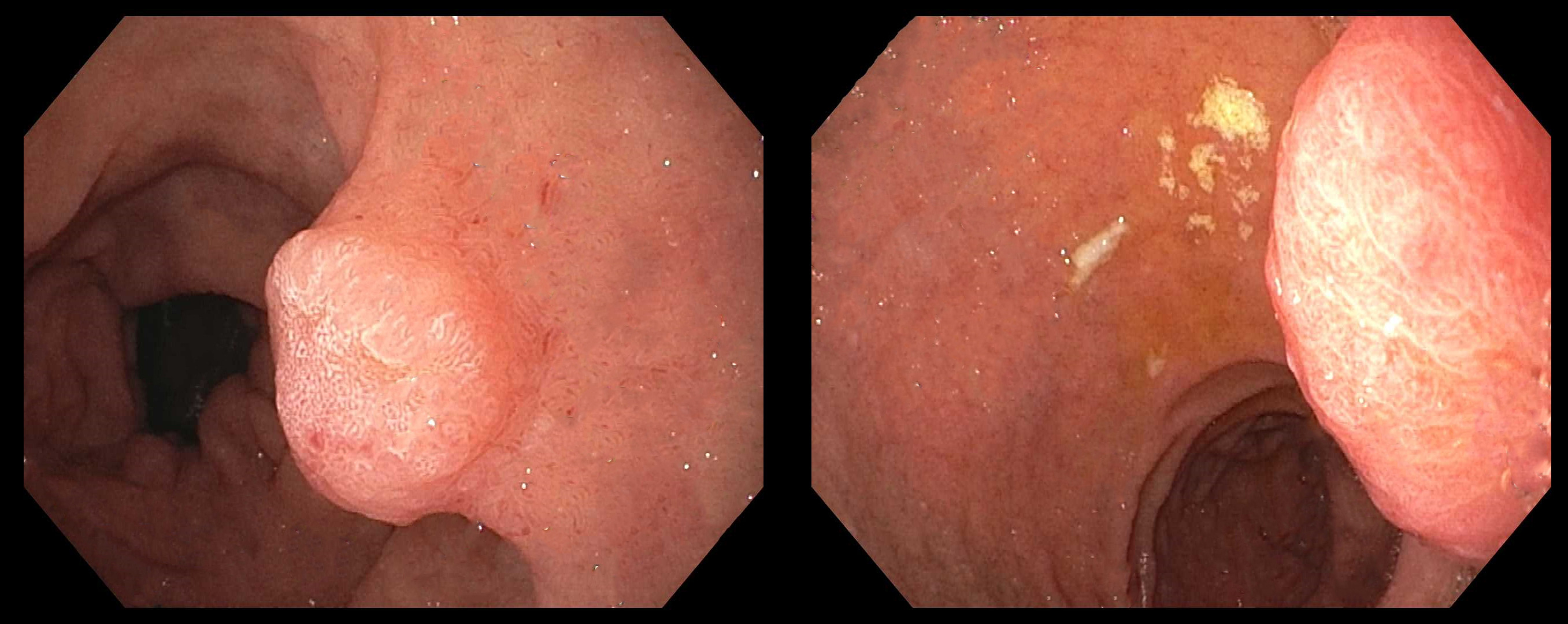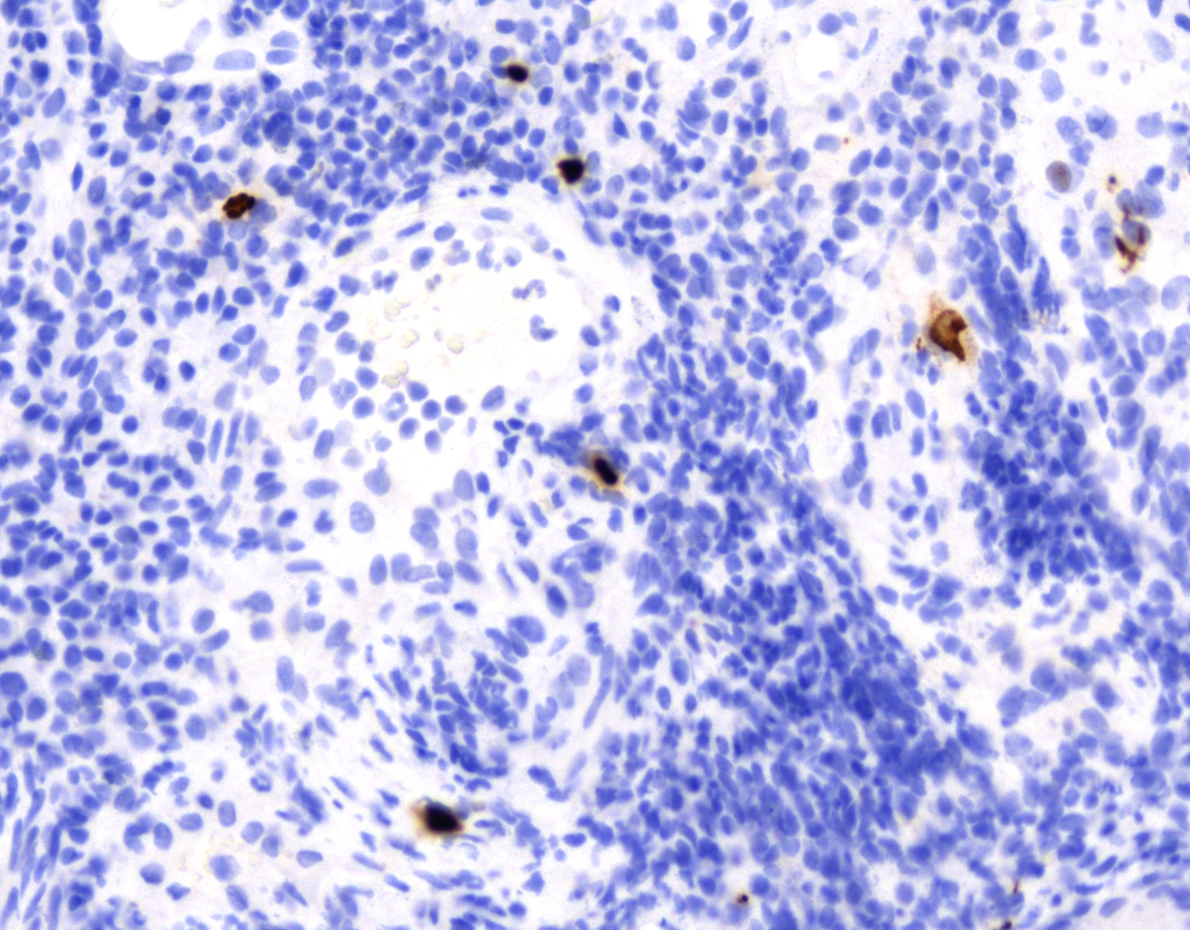Tuesday Poster Session
Category: Small Intestine
P6258 - Pseudo-Tumors of the Duodenum Related to Cytomegalovirus Infection
Tuesday, October 28, 2025
10:30 AM - 4:00 PM PDT
Location: Exhibit Hall

Shaiv B. Patel, MD
Mercy Health
Oklahoma City, OK
Presenting Author(s)
Shaiv B. Patel, MD1, Sophia Pimpinelli, MD2, Anish V. Patel, MD2
1Mercy Health, Oklahoma City, OK; 2Robert Wood Johnson Medical School, Rutgers University, New Brunswick, NJ
Introduction: Cytomegalovirus (CMV) infection can affect any part of the GI tract, with the colon being the most frequently involved site, followed by the esophagus and stomach. Endoscopic findings typically include mucosal erythema, edema, pseudo-membranes, “punched-out” and “cobblestone-like” ulcerations. In rare cases, CMV infection can mimic tumors or neoplasms.
Case Description/
Methods: We present a 61-year-old Caucasian male with ESRD status post renal transplantation (12 months ago) presented with two days of fever, nausea and non-bloody emesis. He did endorse poor appetite, heartburn and a 7 lb weight loss over the previous 2 weeks. Upper Endoscopy revealed multiple tumor-like masses measuring 7- 20mm in the visualized duodenum (Figure 1). Biopsies showed duodenal mucosa with reactive changes, and immunostaining was positive for CMV infection (Figure 2). There was no evidence of malignancy or lymphoma. CMV PCR returned as 4140 IU/mL. He was treated with intravenous ganciclovir with improvement in his GI symptoms. He was discharged to complete a course of oral ganciclovir therapy. Surveillance endoscopy after 8 weeks demonstrated resolution of the duodenal masses.
Discussion: We present here a case of Cytomegalovirus (CMV)-associated pseudo-tumors of the duodenum. They are rare, tumor-like inflammatory lesions that form as a result of both direct viral infection and a robust localized immune response resulting in a mass-like appearance. Although the right colon is most commonly affected, pseudo-tumors have been reports throughout the GI tract. Radiologic and endoscopic findings may mimic malignancy, making histologic evaluation critical for diagnosis. Differential diagnoses include colorectal cancer, lymphoma, Kaposi sarcoma, inflammatory bowel disease, and infectious granulomatosis. Early recognition and appropriate antiviral treatment are essential to avoid unnecessary surgery and improve clinical outcomes. Since these pseudo-tumors respond to medical treatment, it is important for physicians treating immunocompromised patients to be aware of this disease entity.

Figure: Figure 1: Upper Endoscopy revealed multiple tumor-like masses measuring 7- 20mm in the visualized duodenum.

Figure: Figure 2: Biopsies of the duodenal masses showed duodenal mucosa with reactive changes, and immunostaining was positive for CMV infection.
Disclosures:
Shaiv Patel indicated no relevant financial relationships.
Sophia Pimpinelli indicated no relevant financial relationships.
Anish Patel indicated no relevant financial relationships.
Shaiv B. Patel, MD1, Sophia Pimpinelli, MD2, Anish V. Patel, MD2. P6258 - Pseudo-Tumors of the Duodenum Related to Cytomegalovirus Infection, ACG 2025 Annual Scientific Meeting Abstracts. Phoenix, AZ: American College of Gastroenterology.
1Mercy Health, Oklahoma City, OK; 2Robert Wood Johnson Medical School, Rutgers University, New Brunswick, NJ
Introduction: Cytomegalovirus (CMV) infection can affect any part of the GI tract, with the colon being the most frequently involved site, followed by the esophagus and stomach. Endoscopic findings typically include mucosal erythema, edema, pseudo-membranes, “punched-out” and “cobblestone-like” ulcerations. In rare cases, CMV infection can mimic tumors or neoplasms.
Case Description/
Methods: We present a 61-year-old Caucasian male with ESRD status post renal transplantation (12 months ago) presented with two days of fever, nausea and non-bloody emesis. He did endorse poor appetite, heartburn and a 7 lb weight loss over the previous 2 weeks. Upper Endoscopy revealed multiple tumor-like masses measuring 7- 20mm in the visualized duodenum (Figure 1). Biopsies showed duodenal mucosa with reactive changes, and immunostaining was positive for CMV infection (Figure 2). There was no evidence of malignancy or lymphoma. CMV PCR returned as 4140 IU/mL. He was treated with intravenous ganciclovir with improvement in his GI symptoms. He was discharged to complete a course of oral ganciclovir therapy. Surveillance endoscopy after 8 weeks demonstrated resolution of the duodenal masses.
Discussion: We present here a case of Cytomegalovirus (CMV)-associated pseudo-tumors of the duodenum. They are rare, tumor-like inflammatory lesions that form as a result of both direct viral infection and a robust localized immune response resulting in a mass-like appearance. Although the right colon is most commonly affected, pseudo-tumors have been reports throughout the GI tract. Radiologic and endoscopic findings may mimic malignancy, making histologic evaluation critical for diagnosis. Differential diagnoses include colorectal cancer, lymphoma, Kaposi sarcoma, inflammatory bowel disease, and infectious granulomatosis. Early recognition and appropriate antiviral treatment are essential to avoid unnecessary surgery and improve clinical outcomes. Since these pseudo-tumors respond to medical treatment, it is important for physicians treating immunocompromised patients to be aware of this disease entity.

Figure: Figure 1: Upper Endoscopy revealed multiple tumor-like masses measuring 7- 20mm in the visualized duodenum.

Figure: Figure 2: Biopsies of the duodenal masses showed duodenal mucosa with reactive changes, and immunostaining was positive for CMV infection.
Disclosures:
Shaiv Patel indicated no relevant financial relationships.
Sophia Pimpinelli indicated no relevant financial relationships.
Anish Patel indicated no relevant financial relationships.
Shaiv B. Patel, MD1, Sophia Pimpinelli, MD2, Anish V. Patel, MD2. P6258 - Pseudo-Tumors of the Duodenum Related to Cytomegalovirus Infection, ACG 2025 Annual Scientific Meeting Abstracts. Phoenix, AZ: American College of Gastroenterology.
